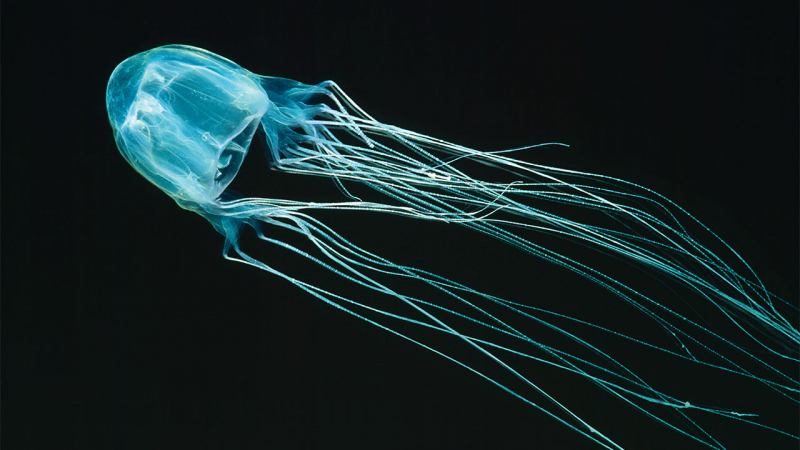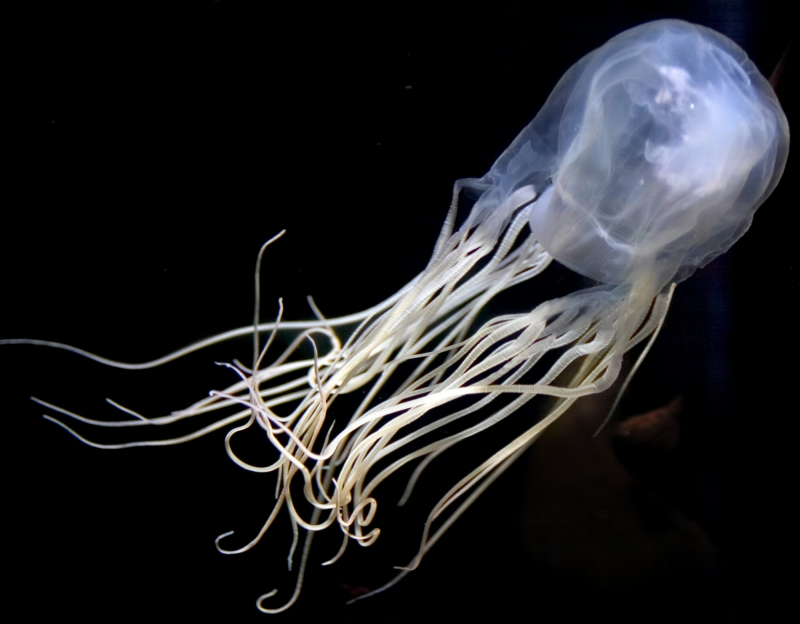Box jellyfish
Cnidarian invertebrates known as box jellyfish can be identified by their body shape. Some box jellyfish species generate powerful venom that is released upon contact with their tentacles. Some species, including as Chironex fleckeri, Carukia barnesi, Malo kingi, and a few others, sting people very painfully and frequently result in death.
Although they are rare in tropical and sub-tropical environments, Australian Box Jellyfish are prevalent in the Indo-Pacific region. They typically reside along the northern Australian coast, however during the hotter summer months, these invertebrates swim closer to the shore to nest in estuaries.
The box jellyfish's tentacles contain venom that can paralyze a victim and cause cardiac arrest in about one or two minutes by attacking the neurological system within minutes. A human can only experience shock because of the sting's agony. Box jellyfish can be lethal to people and may not be apparent in muddy regions because they lay their eggs in the estuaries of northern Australia during their breeding season.
The bell of the box jellyfish medusa, from which it gets its name, is square and box-shaped. A short stalk, or pedalium, with one or more long, thin, hollow tentacles hangs from each of the four lowest corners of this structure. A velarium, or shelf formed by folding the bell's rim inward, limits the aperture of the bell and produces a strong jet when it pulses. Because of this, box jellyfish have been observed to swim up to 6 meters (20 feet) per minute, which is faster than other jellyfish.












